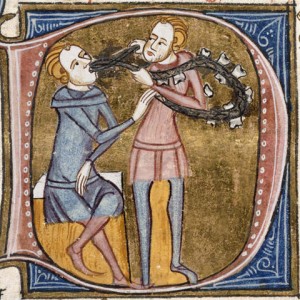RICHARD III’s DENTISTRY
Not so long ago, Richard III was in the news, as they found his body under a car park in Leicester. But what was not immediately in the news, was the state of his teeth.
It appears that he was anxious and fearful (I wonder why?), just as Shakespeare had portrayed him. Investigation into his oral health showed surface loss on a number of back teeth and upper right teeth, suggesting that he suffered from stress-related bruxism, or teeth grinding. Also the king suffered severe tooth decay, possibly as a result of his privileged position and his sweet tooth.

In the British Dental Journal, it says that the monarch’s teeth and jaw showed rudimentary signs of medieval dentistry while some of the teeth showed signs of decay from a diet rich in carbohydrates and sugar. Dentistry from this era was largely based around herbal remedies, amulets and charms, and toothache was a serious and common problem. There are, however, references in many Medieval texts indicating that surgeries were performed on sufferers of oral cancer, fractures and dislocations. Indeed, there is evidence that Richard III underwent dental surgery and had two teeth removed at the hands of a barber surgeon. Nonetheless, despite surgical intervention, it was acknowledged that, in the case of more serious ailments, the only hope of a cure was prayer or pilgrimage.
Whilst common remedies for toothaches began with instructions such as “Get an iron nail and engrave the following words theron, + agla + Sabaoth + athanatos + and insert the nail under the affected tooth…” You can’t help but think many may have preferred prayer for the less serious cases, too!
Apparently further analysis of the tartar found on the teeth in the King’s upper jaw, is due to identify the strains of bacteria in Richard’s mouth and tell us about his diet and oral hygiene. Watch this space, as the teeth discovered by people today continue to tell us about the world of those who lived long before us.